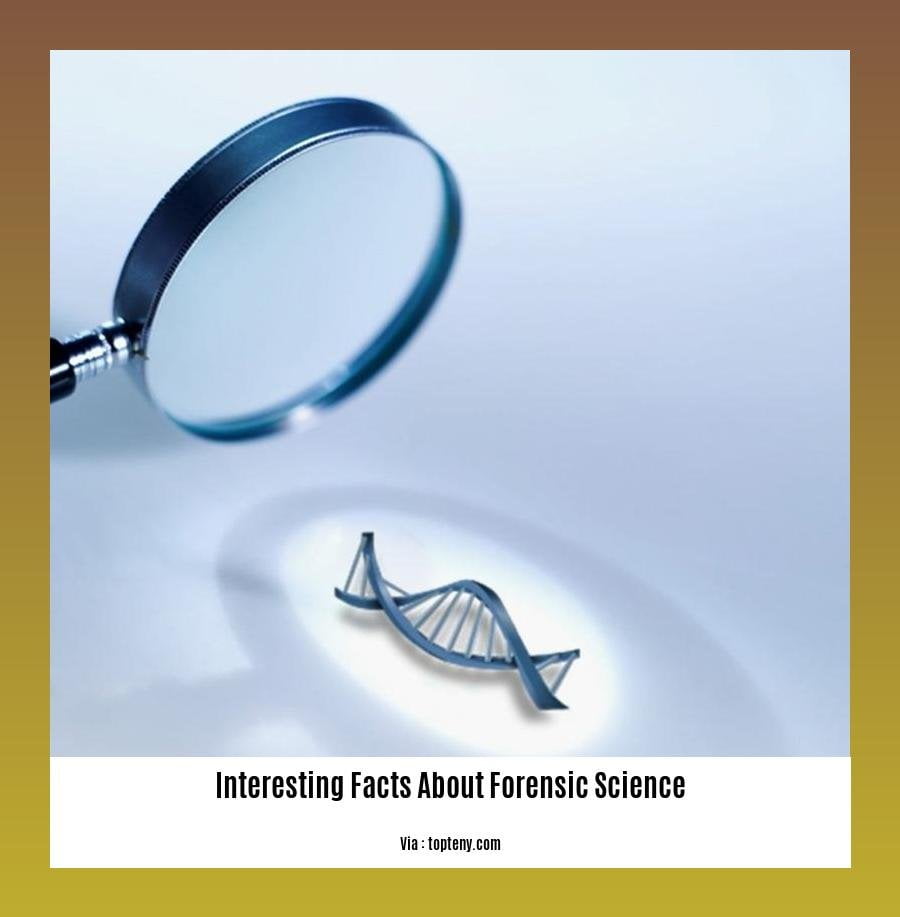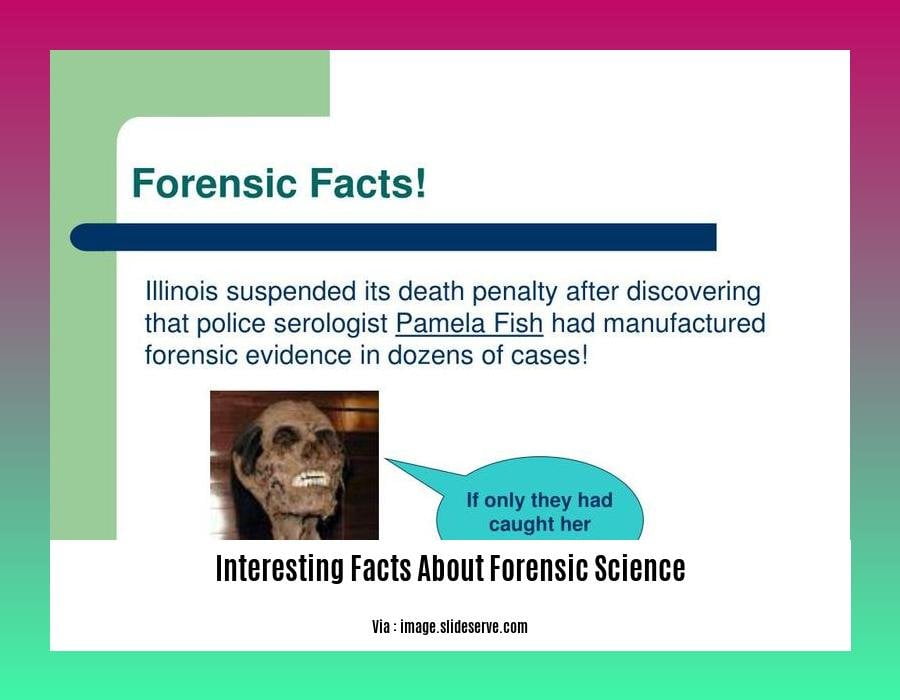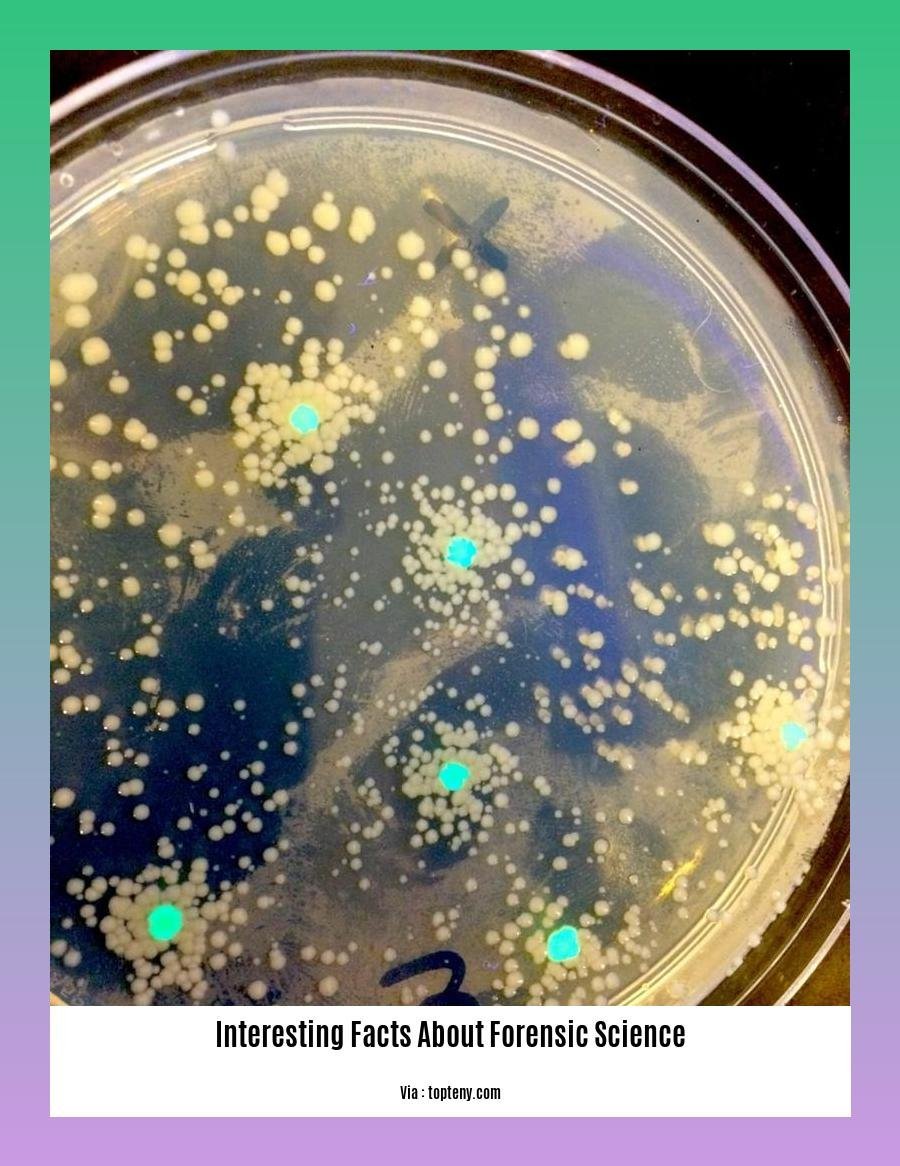In the realm of crime and justice, forensic science stands as a beacon of truth and revelation, shedding light on the darkest mysteries. From the meticulous analysis of DNA evidence to the intricate examination of fingerprints, forensic investigators play a crucial role in solving crimes, ensuring justice for victims, and safeguarding the integrity of our communities. Join us as we delve into the fascinating world of forensic science, unveiling the remarkable techniques and extraordinary contributions that help bring criminals to justice.
Key Takeaways:
- Forensic science is any science applied to the law, helping to solve crimes and uncover the truth.
- Teeth are the most reliable identifiers for determining a corpse’s identity due to their unique characteristics.
- Gender can be determined by examining hair roots, providing valuable information in forensic investigations.
- Bugs can assist in solving crimes by indicating the time of death, contributing to the timeline of events.
- Glitter is an ideal form of evidence due to its unique nature and difficulty in removal, making it useful in crime scene analysis.
- Contrary to popular belief, forensic science was not developed solely by scientists but also by police officers and medical experts working together.
- Arsenic and cyanide are historically known as two of the most common and dangerous poisons, often used in criminal cases.
Interesting Facts About Forensic Science

Are you fascinated by the intricacies of forensic science? Here are some thought-provoking facts that will leave you in awe of this captivating field:
Teeth act as Unforgettable Markers
In the realm of identification, teeth outshine fingerprints, leaving an eternal impression of a person’s identity. Even after a body has undergone decomposition or fire damage, teeth remain resilient, providing invaluable clues to unlock the mysteries of the unknown.
Revealing Hair’s Hidden Secrets
Hair holds a trove of information beyond its aesthetic charm. Not only can it determine gender, but its roots also contain valuable DNA, acting as a personal genetic library for forensic investigators.
Crime-Solving Insects
Forensic entomology is a fascinating field that harnesses the power of insects to solve crimes. By analyzing the insects that frequent a crime scene, investigators can accurately estimate the time of death, providing a crucial piece of the puzzle.
Glitter: An Unlikely Crime-Fighting Tool
Often associated with glamour, glitter plays a surprising role in forensic science. Due to its unique composition and difficulty in removal, glitter is an ideal form of evidence for tracing suspects and linking them to crime scenes.
Forensic Science’s Unsung Pioneers
Contrary to popular belief, forensic science owes its birth not to scientists but to dedicated police officers and medical experts. These trailblazers recognized the potential of scientific methods in criminal investigations, paving the way for the specialized field we know today.
A Tale of Two Deadly Poisons
Arsenic and cyanide, infamous for their toxicity, have left an indelible mark on the history of crime. These substances have played a deadly role in countless poisoning cases, earning a reputation as some of the most dangerous killers in the annals of criminal investigations.
Facts at a Glance
| Fact | Synopsis |
|---|---|
| Teeth’s Reliability | Teeth offer the most reliable identification compared to fingerprints. |
| Hair’s Gender Clues | Hair roots contain DNA, indicating a person’s gender. |
| Insects as Timekeepers | Bugs assist in estimating the time of death based on their presence at a crime scene. |
| Glitter’s Forensic Value | Glitter’s uniqueness and persistence make it useful for tracing suspects. |
| Forensic Science’s Humble Beginnings | Police officers and medical experts, not scientists, pioneered forensic science. |
| Arsenic and Cyanide’s Infamy | Arsenic and cyanide are historically renowned as deadly poisons. |
Delve into the facts about zinc metal, unlocking the secrets of its unique properties and fascinating applications. Discover the incredible diversity of life beneath the waves with life below water facts that will leave you in awe of the ocean’s hidden wonders. Explore the intricate tapestry of life on land with facts about life on land that showcase the remarkable adaptations and interconnections of terrestrial ecosystems.
They undergo extensive training in forensic techniques.

Forensic science is a multidisciplinary field that encompasses a wide range of scientific disciplines, including biology, chemistry, physics, and mathematics. To become a forensic scientist, one must have a strong foundation in these core sciences and undergo extensive training in forensic techniques.
Forensic science training programs typically cover a wide range of topics, including:
- Crime scene investigation
- Evidence collection and preservation
- DNA analysis
- Fingerprint analysis
- Firearms examination
- Drug analysis
- Toxicology
- Trace evidence analysis
- Digital forensics
Forensic scientists must also be proficient in the use of a variety of laboratory equipment, such as microscopes, spectrometers, and gas chromatographs. They must also be able to effectively communicate their findings to law enforcement officers, attorneys, and judges.
The training required to become a forensic scientist can be rigorous and demanding, but it is essential for ensuring that forensic scientists have the skills and knowledge necessary to conduct accurate and reliable analyses. This extensive training is crucial for ensuring that forensic scientists are able to provide high-quality, scientifically sound evidence that can be used to solve crimes and bring criminals to justice.
Key Takeaways:
Forensic scientists must have a strong foundation in the core sciences, such as biology, chemistry, physics, and mathematics.
Forensic science training programs typically cover a wide range of topics, including crime scene investigation, evidence collection and preservation, DNA analysis, fingerprint analysis, firearms examination, drug analysis, toxicology, trace evidence analysis, and digital forensics.
Forensic scientists must be proficient in the use of a variety of laboratory equipment.
Forensic scientists must be able to effectively communicate their findings to law enforcement officers, attorneys, and judges.
The extensive training required to become a forensic scientist is crucial for ensuring that forensic scientists are able to provide high-quality, scientifically sound evidence that can be used to solve crimes and bring criminals to justice.
Sources:
Strengthening Forensic Science in the United States: A Path Forward
International Association for Identification: Training Standards
They use advanced technology in their investigations.
Forensic science wouldn’t be where it is today without advanced technology. It’s almost impossible to imagine crime-solving without DNA analysis, digital forensics, and spectroscopy.
DNA analysis is probably the most well-known forensic technology. It can be used to identify suspects, victims, and even long-lost relatives. DNA analysis is also used to investigate crimes like sexual assault and murder.
Digital forensics is the use of technology to investigate crimes that involve computers or other electronic devices. Digital forensics experts can recover deleted files, track down online activity, and identify the source of cyberattacks.
Spectroscopy is the study of how matter interacts with light. Spectroscopy is used in forensic science to analyze a wide variety of evidence, including drugs, explosives, and fibers.
These are just a few examples of the many ways that advanced technology is used in forensic science. As technology continues to develop, forensic scientists will have even more powerful tools at their disposal to help them solve crimes and bring criminals to justice.
Key Takeaways:
Forensic science is a rapidly evolving field that relies heavily on advanced technology.
DNA analysis, digital forensics, and spectroscopy are just a few of the many technologies used by forensic scientists.
Advanced technology has revolutionized the way that forensic scientists investigate crimes and bring criminals to justice.
Source:
- Latest Advancements in Forensic Science Technologies (2023):
FAQ
Q1: What role do crime scene investigators play in solving crimes?
A1: Crime scene investigators are responsible for conducting thorough examinations of crime scenes to gather and analyze evidence. They play a vital role in documenting the scene, collecting physical evidence, and identifying potential witnesses. Their expertise and attention to detail are crucial for reconstructing the events of a crime and providing valuable information to law enforcement agencies.
Q2: Why is the work of crime scene investigators essential for delivering justice?
A2: The work of crime scene investigators is essential for delivering justice because they provide objective and scientific evidence that can be used to identify suspects, corroborate witness statements, and reconstruct the sequence of events. Their findings can help law enforcement agencies build strong cases against perpetrators, leading to successful prosecutions and convictions.
Q3: What kind of training do crime scene investigators undergo?
A3: Crime scene investigators undergo extensive training to acquire the necessary skills and knowledge to conduct thorough and effective investigations. This training typically includes courses on forensic science, crime scene processing, evidence collection, photography, report writing, and legal procedures. They also receive hands-on experience through internships and field training under the supervision of experienced investigators.
Q4: What advanced technology do crime scene investigators use in their investigations?
A4: Crime scene investigators use a wide range of advanced technology to assist them in their investigations. This technology includes digital cameras and video equipment for crime scene documentation, laser scanners and 3D imaging systems for crime scene mapping, chemical analysis tools for identifying trace evidence, and DNA analysis techniques for identifying suspects and victims.
Q5: What are some ethical considerations that crime scene investigators must be aware of?
A5: Crime scene investigators must adhere to strict ethical guidelines to ensure the integrity and objectivity of their work. These guidelines include maintaining confidentiality, respecting the rights and dignity of victims and witnesses, and avoiding any actions that could compromise the integrity of the evidence. They must also be aware of the potential biases and limitations of forensic science and take steps to minimize their impact on their investigations.












